Along with Japan’s declining labor force, the number of foreign nationals working in Japan is increasing. Most of these foreign nationals are undertaking the Japanese Language Proficiency Test (JLPT) in order to find employment in Japan. Everyone studying Japanese may wish to know which test suits their Japanese study needs best.
The difference between the JLPT and JPT
There are two Japanese language tests – the Japanese Language Proficiency Test (JLPT) and the Japanese Proficiency Test (JPT). The purpose of the JPT (Japanese Proficiency Test) is to objectively measure and evaluate communication skills required for enrollment and employment in Japan. The JLPT is held in order to evaluate and certify the proficiency in Japanese of non-native speakers. Therefore when job hunting, the JLPT will often be the measure by which one is judged.
Number of times held and host country
The JLPT is held twice a year in Japan (the year 2020 was changed due to the Coronavirus). In contrast, the JPT is held 12 times a year in Japan, and since the JPT is held more frequently, it can be said that it is always the most up-to-date test of ones Japanese language level.
There is also a big difference in the countries where the JLPT is held. The JLPT is held in about 90 countries outside of Japan, making it possible to take the test in many countries around the world, while the JPT is held mainly in Asia, currently in Thailand, Vietnam, Korea, Indonesia, China, and Hong Kong.
Differences in question format
The JLPT is like the Eiken test in that it is divided into different levels, with the most difficult level being N1 and the easiest level being N5. The questions on the JLPT vary slightly from grade to grade, but consist of language knowledge (letters, vocabulary, and grammar), reading comprehension, and listening comprehension. There are no conversation or writing tests. Test results are announced in the form of pass/fail based on the score for each score category and the total score.
Like the TOEIC® L&R Test, the JPT consists of 100 listening comprehension questions and 100 reading comprehension questions, for a total of 200 questions. The test result is not pass/fail, but a score of 5-495 points for listening comprehension, 5-495 points for reading comprehension, and 10-990 points for a total score in increments of 5 points.
Below is a table comparing the JLPT and JPT scores for each level.
| JPT | JLPT |
| 660~990 points | N1 |
| 525~659 points | N2 |
| 430~524 points | N3 |
| 375~429 points | N4 |
| 315~374 points | N5 |
The JPT has a detailed scoring system, which allows for a more detailed assessment of the Japanese language level.
Advantages of the JLPT
Taking the JLPT exam and passing the advanced level, N1 or N2, has the advantage of making it easier to obtain a work visa. There are other national examinations in Japan for which N1 is a requirement.
For more information, please visit the website of the Immigration Bureau of the Ministry of Justice or the Ministry of Health, Labor and Welfare .
Advantages of the JPT
Unlike the JLPT, the scores are given in increments of 5 points, so it is possible to get a more precise idea of the level of your Japanese. In particular, the N1 level of the JLPT has a minimum score of 660 points on the JPT, and the full score of 990 points is 330 points away, so the JPT is a better test for advanced students to get a more detailed assessment of their Japanese language skills.
Similarities between the JLPT and the JPT
Neither the JLPT nor the JPT includes a conversation test or a writing test. Therefore, the JLPT and JPT cannot be used alone to measure conversational and writing skills.
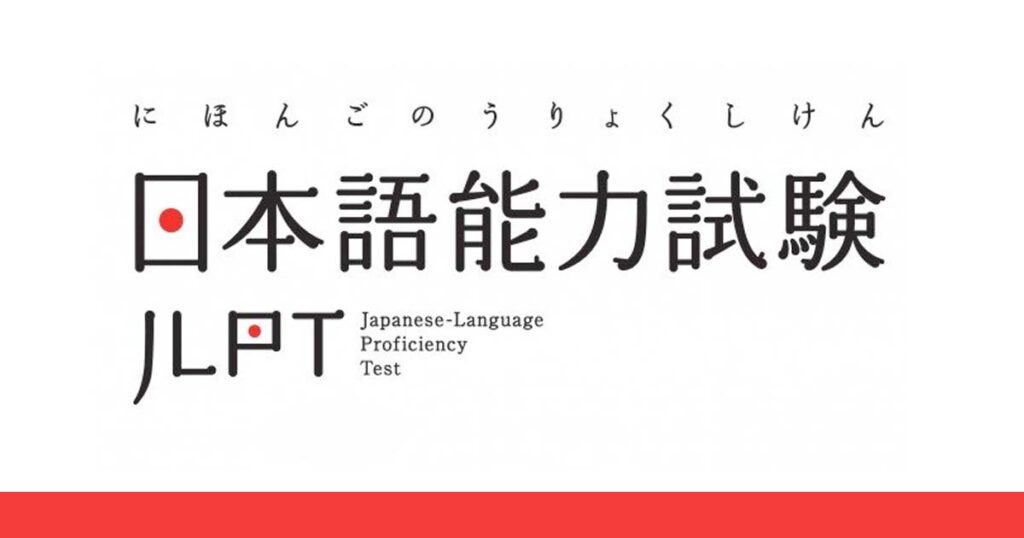
JLPT test content and guidelines for passing the test
First, let’s look at examples of questions from N3 to N1 and the guidelines for passing the exam.
About the N3
N3 is right in the middle of the JLPT scale, so it is the intermediate level.
Let’s take a look at some sample questions.
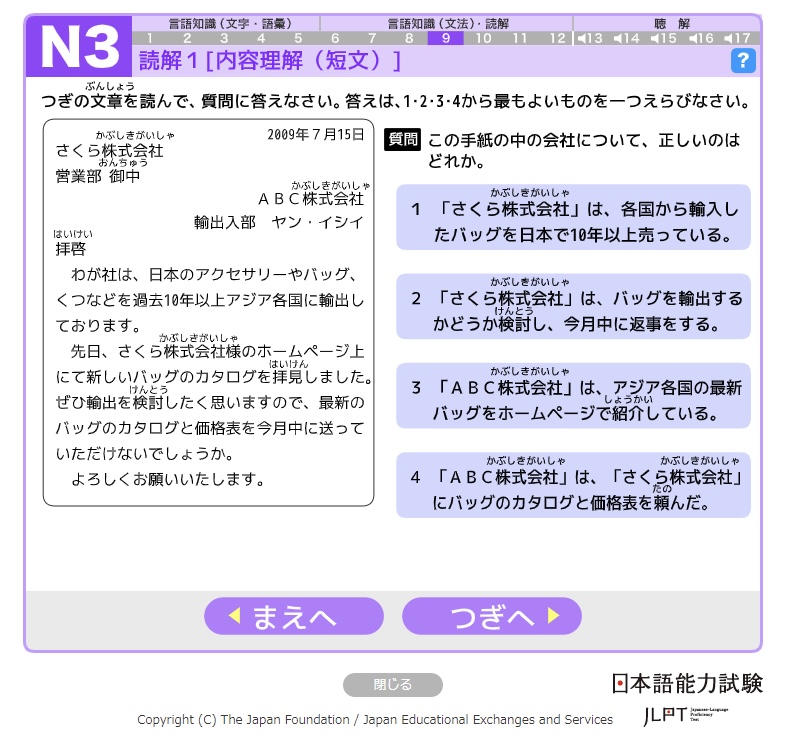
In N3, words such as 御社, 株式会社, and 拝見, which are Japanese words that are used in business, are included in the test.
You must be able to understand Japanese used in everyday situations to some extent
Reading
Read and comprehend texts that describe the specifics of everyday topics.
To be able to grasp the gist of information from newspaper headlines, etc.
Able to understand the gist of slightly more difficult sentences encountered in everyday situations, if given paraphrased expressions.
Listening
Can listen to a coherent conversation at a somewhat natural speed in everyday situations and understand most of the specific details of the conversation along with the relationships among the characters.
If you have obtained N3, you can work in Japanese. Although it depends on the nature of the work and the level of Japanese used, N3 level Japanese is sufficient for tasks that can be performed once understood.
About the N2
From N2, the level is advanced.
Let’s take a look at an example problem.

In order to pass the N2 you must satisfy the following guidelines:
In addition to understanding Japanese used in everyday situations, be able to understand Japanese used in a wider range of situations to some extent.
Reading
Able to read and understand the content of texts with a clear argument, such as newspaper and magazine articles and commentaries written on a wide range of topics, and plain reviews.
Able to read and understand the flow of conversation and the intent of expression in reading materials on general topics.
Listening
Able to understand the flow, content, relationships between characters, and grasp the gist of a conversation by listening to coherent conversations and news stories at near-natural speed in a wide range of situations in addition to everyday situations.
It is generally believed that a person who has obtained N2 is fully capable of working in Japanese. In fact, many people who have obtained N2 have received job offers in Japan and are working in Japan. As shown in the sample questions, kanji characters appear without furigana on the test, so reading and writing kanji should not be a problem.
About the N1
N1 is the highest level of the JLPT.
Let’s take a look at some sample questions.
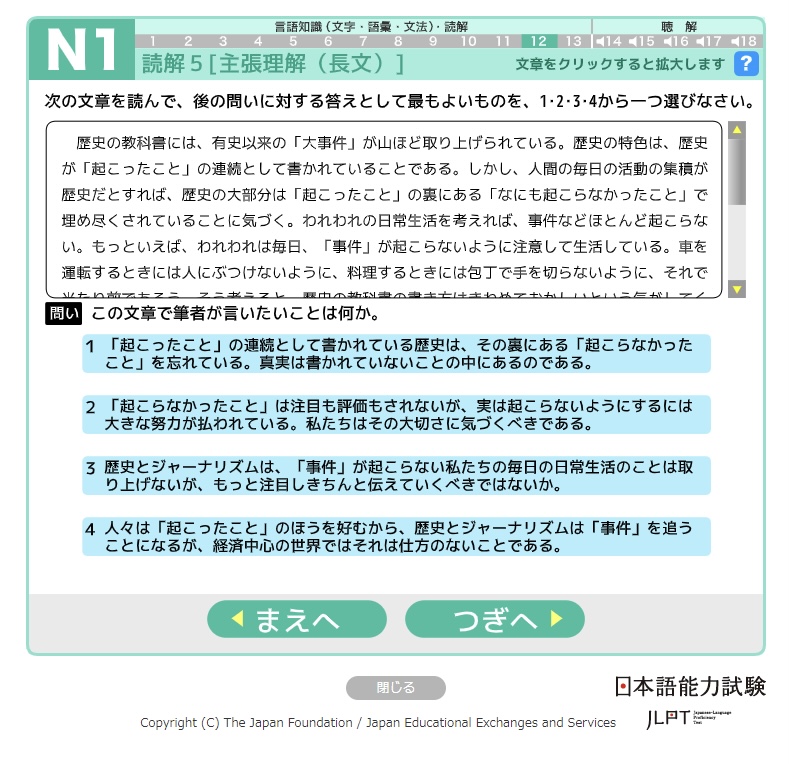
In N1, there are questions so difficult that even Japanese people may make mistakes.
You must be able to satisfy the following requirements:
Able to understand Japanese used in a wide range of situations
Reading
Able to read and comprehend the structure and content of complex, logical, and highly abstract texts, such as newspaper editorials and reviews on a wide range of topics.
Able to understand the flow of the story and the intent of detailed expressions by reading reading materials that have depth of content on various topics.
Listening
The ability to listen to coherent conversations, news, and lectures at a natural speed in a wide range of situations and understand the flow and content of the conversation, the relationships between characters, and the logical structure of the content in detail and grasp the gist of the content.
Those who have obtained N1 can communicate in Japanese without any discomfort. They can listen to and understand news, newspapers, and other media that contain many relatively difficult words, so they should have no problem using Japanese at work.
In addition, N1 level students will also be able to use keigo (honorific expressions) unique to the Japanese language, so they will be able to understand Japanese used in business. However, there are people who say that their actual Japanese language skills are not as good as N1 or N2, so we recommend that you confirm this at an interview.
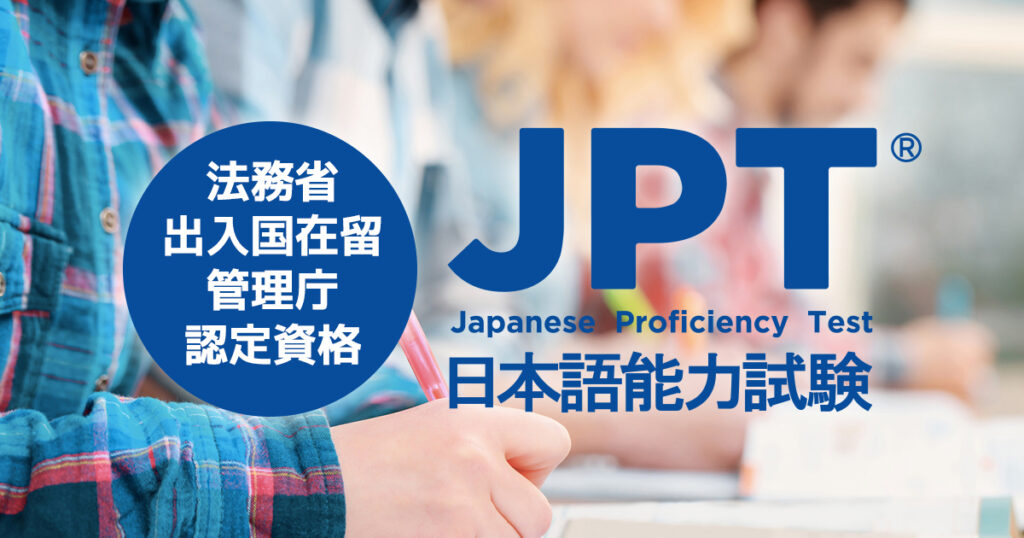
Now we will discuss the JPT
Above 460 points
You can handle simple content, but have trouble expressing it accurately.
Listening Comprehension
Can understand and respond to simple daily conversation in outline.
Can express him/herself in easy Japanese on general topics such as hobbies, family, weather, etc.
Reading
Able to understand plain sentences.
Considering that the standard for the same level as N3 is 430 or higher, a score between 430 and 460 can be said to be somewhere between intermediate and advanced. For some people, simple conversation can be done quite smoothly at this stage.
Above 610 points
Able to engage in daily conversation in Japanese within a limited range.
Listening Comprehension
Can generally understand everyday conversation.
May have difficulty understanding complex issues, but can understand the content of meetings and business negotiations.
Reading Comprehension
Able to understand sentences about everyday situations to some extent.
Able to understand complicated sentences when given plain expressions.
Unlike the JLPT, the JPT requires the ability to answer a large number of questions in a short period of time and to make quick judgments about right and wrong. Therefore, a score of 610 or higher is equivalent to an N2 on the JLPT.
Above 740 points
Able to communicate appropriately in Japanese in a wide range of situations.
Listening Comprehension
Can understand content on a wide range of topics.
Ability to generally understand and respond to what others say in meetings, business negotiations, telephone calls, etc.
Reading Comprehension
Able to recapitulate the important details of meetings attended.
Able to grasp and understand the differences between conflicting opinions and views.
If you have scored 740 or above, you should be able to use Japanese fluently and naturally enough to smoothly communicate with native Japanese speakers. If you are a specialist in your field, you should be able to discuss abstract and concrete topics in Japanese, including technical discussions.
Above 880 points
Able to communicate adequately in Japanese in any situation.
Listening Comprehension
Able to grasp subtle differences in expression on any topic and communicate accurately.
Ability to use appropriate expressions and vocabulary appropriate to the person with whom one is speaking.
Reading Comprehension
Can write accurately in business documents, e-mails, and any other texts.
If you score 880 or above, you will be able to communicate smoothly and without discomfort in Japanese. They are business-level Japanese speakers who are also able to use keigo (honorific expressions) well. Some people will be able to use grammar and vocabulary at such an advanced level that they could be mistaken for native speakers.
Here is an example problem.
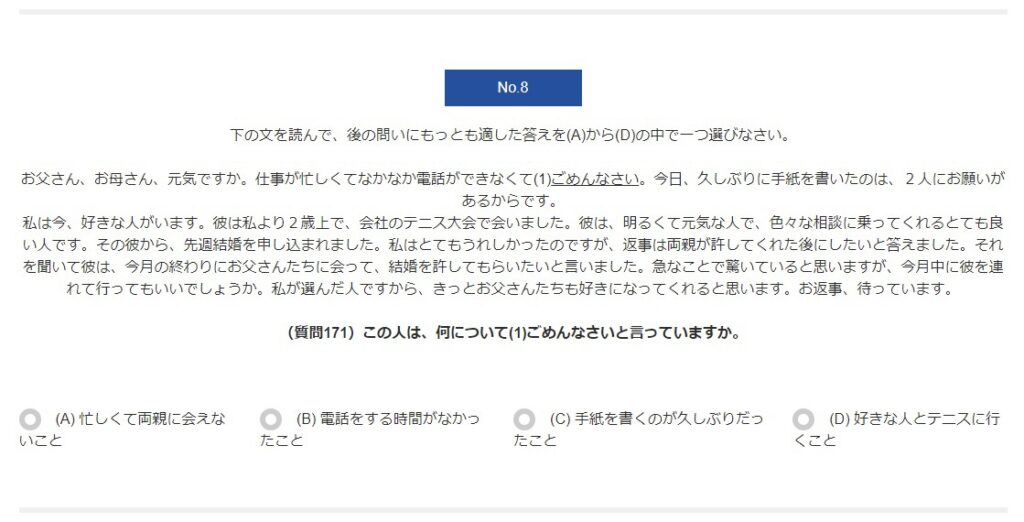
Overall, those with beginner or intermediate Japanese may find more use for the JLPT test, while those wishing for an extra challenge may wish to take on the JPT. In either case, Toranomon Language School can help you with your preparations through private or group lessons.

